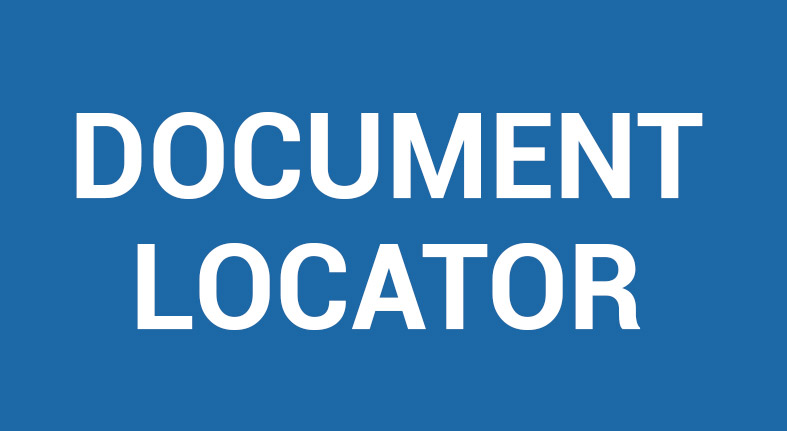Document management technology enables El Dorado Irrigation District to slash paper, improve efficiency, and meet records management requirements.
El Dorado Irrigation District (EID) serves nearly 100,000 people in northern California’s geographically diverse El Dorado County. It provides a unique combination of water-based services including drinking water, wastewater treatment, recycled water for landscape irrigation, hydropower generation, and recreation areas.
Records management out of control
The utility’s headquarters are located on a 40-acre campus with one large building and several outlying smaller buildings. Walking among the buildings to find documents was time-consuming and inefficient, so there were multiple copies of most paper documents, with little records management discipline applied.
EID’s digital processes also lacked controls. File server contents grew from 500,000 files to 775,000 files in less than two years, but no naming or organization discipline was adopted. Users arbitrarily moved folders, other users could not find folders, and security was loose.
In addition to its massive paper archive and uncontrolled file server use, EID was soon required to meet new government standards. In 2002, the State of California established records management regulations (“CalRIM”) that mandated retention rules and other practices for entities that receive public funding.
The search for a solution
New management arrived with previous experience with computer-based document management systems, and initiated the search for a solution. Business administrators started the search and soon involved the Information Technology division. The first proposed solution was a paper-based filing system with color-coded files and large moving cabinets. The initial projected cost was $300,000, and the system would have continued the “paper culture,” an unacceptable solution.
When IT became involved, Glenn Purkett, IT Technician, investigated dedicated records management systems, but found that the cost of training all 280-plus employees in formal records management concepts and discipline would cost $70,000—again, not acceptable. In addition, many employees would have been faced with significant changes in their daily work processes.
Windows compatibility crucial
Purkett then focused on using an integrated document management system to gradually convert the paper-based system to digital documents to organize and manage the growing file server problem. Previously, EID had outsourced scanning paper documents from one large project, but the resulting proprietary file and repository formats were a barrier to effective use of the scanned files. Therefore, strict Windows compatibility was a mandatory requirement for any solution. Document Locator not only met the technical demands for scanning and file management, it actually proved to cost less than the records management training alone. The intuitive user interface and integration with Microsoft Windows would allow EID to introduce document management practices with minimal user training.
From boxes of paper to DVDs
After an initial investment in Document Locator and a Canon scanner, EID scanned 87 boxes of paper, which included 79 years of board minutes and resolutions, three years of accounts payable information, and 30,000 employee time sheets spanning two years.
As a test of the system, Purkett put the entire record of board activity onto DVDs and developed a process to supply board members with upcoming agenda items, and to enable them to review material. With board members now able to review and mark up pending items based upon complete access to historical reference material, Purkett won approval for the full project.
Document Locator was initially deployed into the finance department, which was determined to be the “path of least resistance.” Internal and external customers often need accounts payable information, so the department frequently received requests for information that required searching through stacks of paper, an estimated 55,000 pages per year. Also, the payroll clerk was overloaded with employee requests such as, “How much time was spent last quarter on Project x?” At a minimum, by scanning accounts payable documents and timesheets into a searchable repository, finance department workers and other parties could eliminate the overhead incurred through manual searches, and EID managers could directly search their employees’ timesheets for immediate results. Two years of accounts payable and timesheet documents have been scanned to date, and scanning has almost caught up to current records. The next scanning task will move the complete set of administrative documents online.
As previously noted, thousands of digital documents were stored on shared file servers, with many duplicates and little organization. This original folder structure actually contributed to document management problems. In a fresh approach, Purkett created a new folder structure within Document Locator, one designed to meet CalRIM requirements. The solution allows documents to be moved into a permanent records management structure, with duplication and ownership issues resolved. Today, a selected group of users are moving documents from the file server into Document Locator.
Results: savings, productivity, and compliance
EID continues to have a few parallel paper and digital business processes. Purkett chose to preserve some paper processes during the initial Document Locator deployment because it allowed potentially skeptical users to continue with familiar work tasks while gradually being exposed to the benefits of an electronic document management system. Even so, the initial benefits have been significant.
The finance department had been using an outside service to retroactively microfilm their records at a cost of $9,000 a year plus three months of internal work to prepare the documents for filming. And once the records were available on film, searching for and copying microfilmed records continued to consume significant time. With the addition of a dedicated Canon scanner, the department can now ensure that all records are immediately online and retrievable, regardless of whether they originate on paper or in a computer. The board of directors is now more efficient; they are able to preview upcoming issues, electronically review relevant historical material, and deal online with resolution documents and minutes. The payroll clerk has been completely relieved of requests for timesheet information, freeing time for other tasks.
Perhaps most important, EID is well on the way to meeting CalRIM requirements, ensuring access to future public funds that might otherwise be withheld. And Document Locator is now the foundation for ongoing improvements in business processes, resulting in lower costs, higher productivity, and better service to customers within and outside EID.
Learn more
Be ready for the next audit
Employee files under control
Structured project files
Automate business processes
Ready for a Demo?
Take the first step towards streamlining your processes and enhancing collaboration with Document Locator. Request a demo today and discover how our document control solution can help your organization.
Fill out the form to get started.




